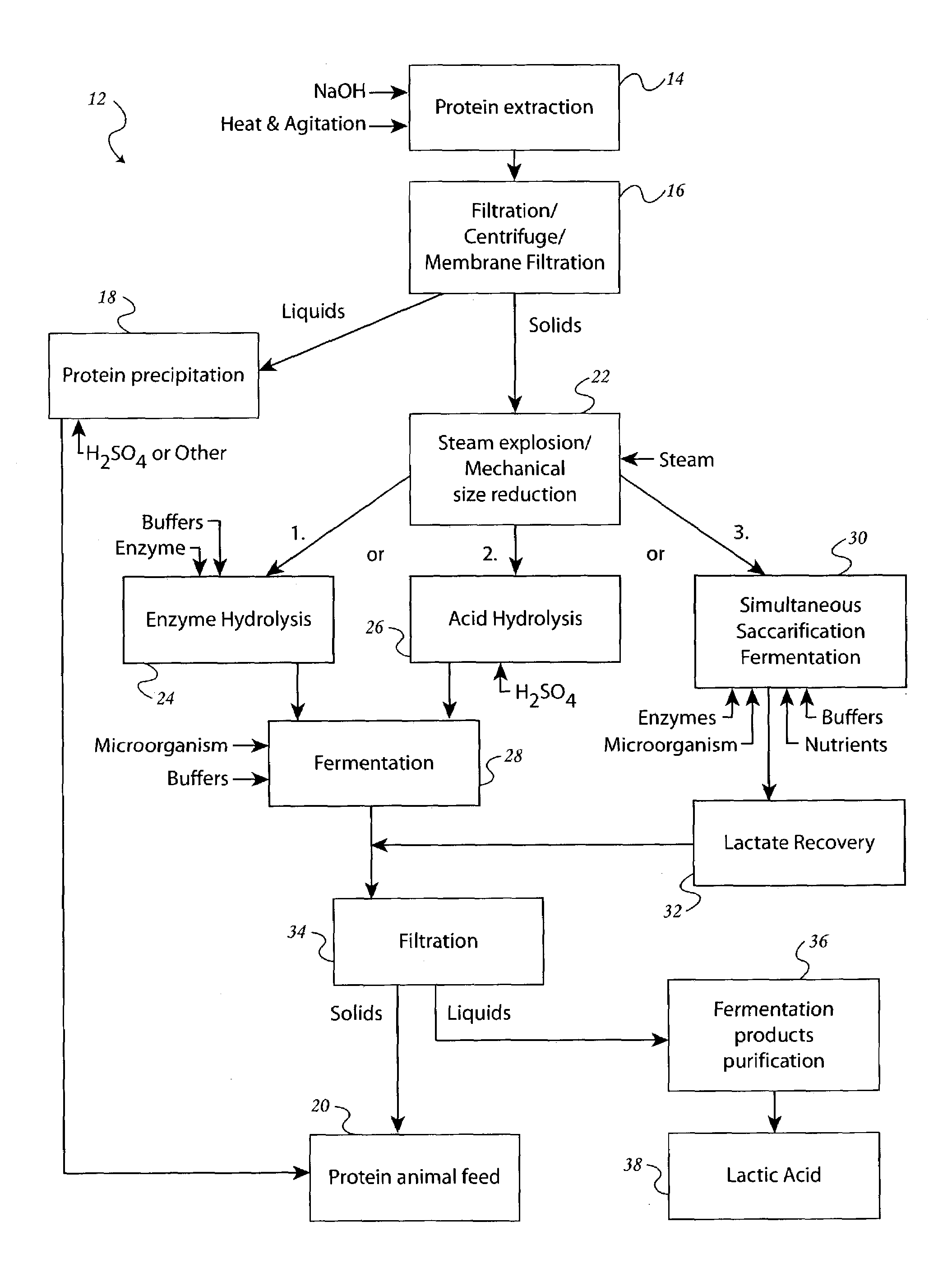Method for production of lactic acid
- Summary
- Abstract
- Description
- Claims
- Application Information
AI Technical Summary
Benefits of technology
Problems solved by technology
Method used
Image
Examples
Embodiment Construction
[0026]The method of the present invention can be understood with reference to the sole FIGURE, which shows a flowchart 12. The agricultural feedstock, such as soybean hulls, must first be converted to monomeric sugars by pretreatment and enzymatic saccharification. Initially, a pretreatment procedure is carried out by diluting caustic extraction of soluble protein fraction. A mixture containing from about 30% to about 70% dilute caustic soda (NaOH) solution having 1.5% in water and from about 30% to about 70% soybean hull is agitated at from about 25° C. to about 75° C. for about 1 to 5 hours, as denoted in the FIGURE by numeral 14. A soluble protein fraction is extracted from the soybean hull, and removed with the liquid when the solid soybean hull is separated from the mixture by filtration, denoted by the numeral 16. The protein in the liquid fraction can be precipitated, as denoted by the numeral 18, by lowering the liquid pH below the isoelectric point of the protein. The prote...
PUM
| Property | Measurement | Unit |
|---|---|---|
| Temperature | aaaaa | aaaaa |
| Temperature | aaaaa | aaaaa |
| Fraction | aaaaa | aaaaa |
Abstract
Description
Claims
Application Information
 Login to View More
Login to View More - R&D
- Intellectual Property
- Life Sciences
- Materials
- Tech Scout
- Unparalleled Data Quality
- Higher Quality Content
- 60% Fewer Hallucinations
Browse by: Latest US Patents, China's latest patents, Technical Efficacy Thesaurus, Application Domain, Technology Topic, Popular Technical Reports.
© 2025 PatSnap. All rights reserved.Legal|Privacy policy|Modern Slavery Act Transparency Statement|Sitemap|About US| Contact US: help@patsnap.com


